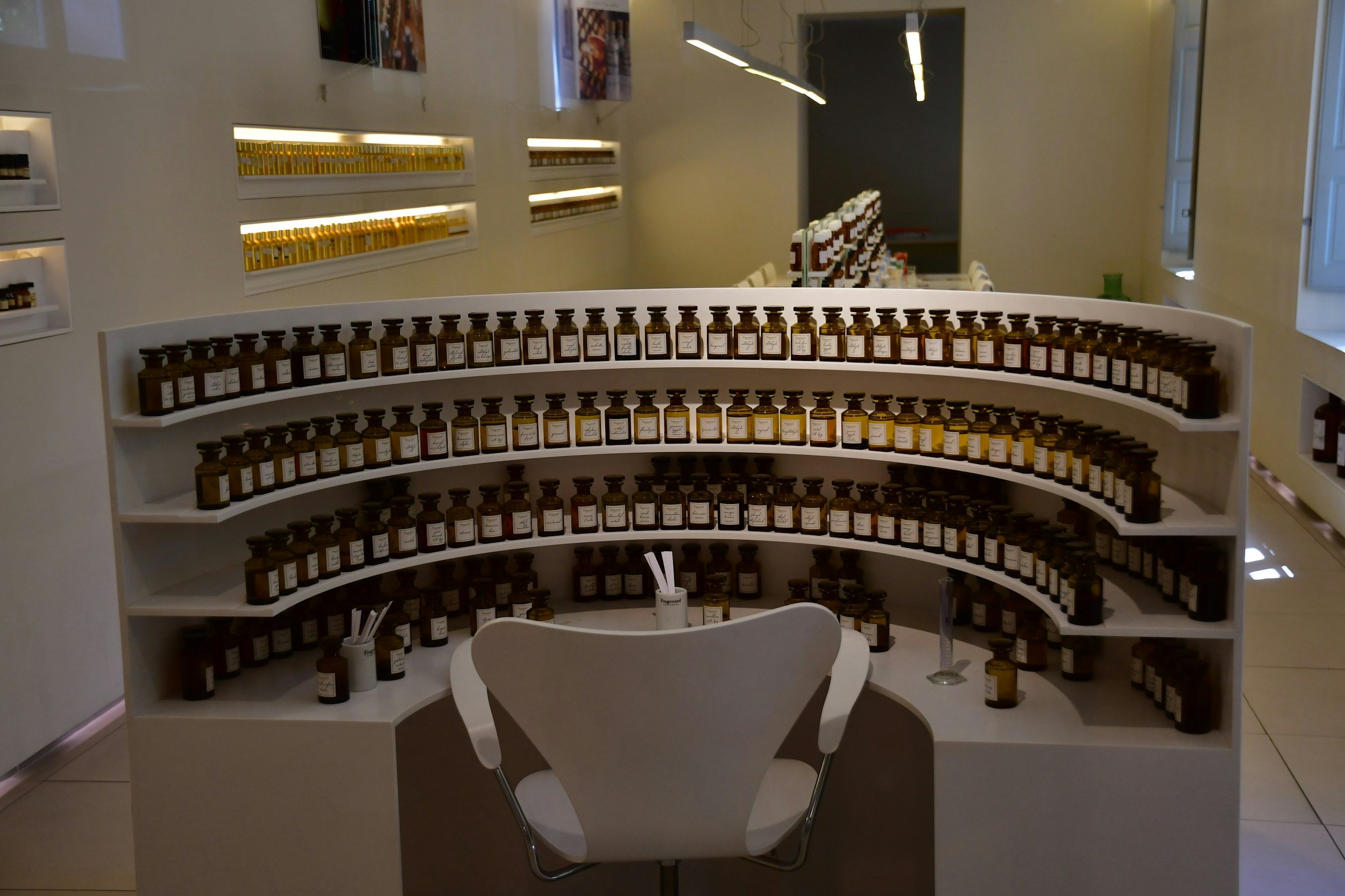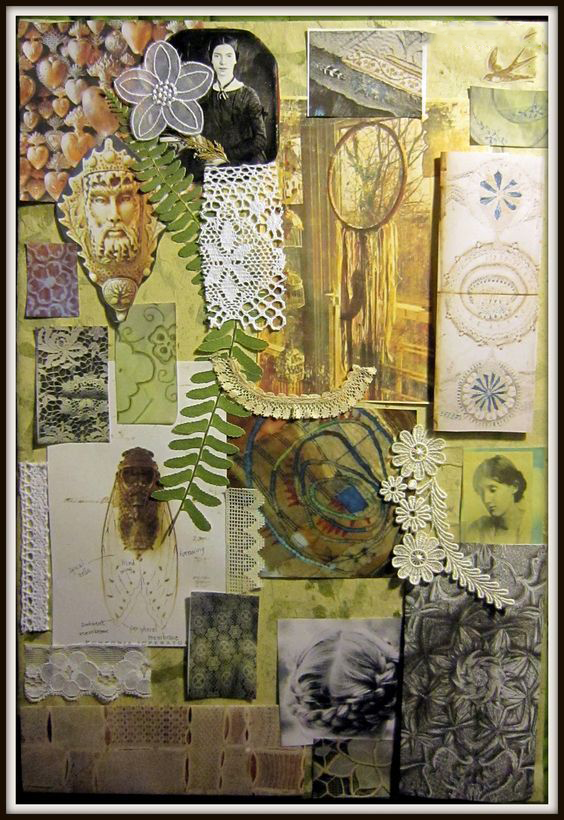
Perfumery - Clarifying the concept

NoteBook
Using a notebook for a brain dump is an excellent way to capture all your ideas and thoughts in one place without structure or limitations. This method is especially useful when working on a new business idea, like your high-end perfume store, where you have many creative elements to organize. Here’s how to get started:
1. Choose a Notebook
Select a notebook that you’ll enjoy using. It could be a simple lined notebook, a journal, or even a sketchpad if you like drawing ideas out.
Keep it dedicated solely to your perfume store idea so that it becomes your go-to place for all thoughts related to the project.
2. Set a Brain Dump Session
Find a quiet space where you won’t be interrupted.
Set aside 30-45 minutes where you can write freely without thinking too much about structure.
The goal is to get all your thoughts out on paper without worrying about how they connect or if they’re fully developed.
3. Start Writing Freely
Begin by writing down everything that comes to mind about the perfume store. Don’t worry about grammar, order, or completeness—just let your thoughts flow. This might include:
Ideas about the store’s atmosphere (luxury, exclusive, sensory experience).
Thoughts on product types (niche, rare, or curated perfumes).
Target customer: Who are they, what do they want, and how will you appeal to them?
Branding ideas: Names, logo concepts, taglines, color schemes.
Store layout and design: How you imagine the space looking—what type of decor, lighting, and displays?
Customer journey: What experience do you want customers to have from the moment they enter?
Competitor inspiration: Notes on what high-end competitors do well, and what you can do differently.
Marketing ideas: Thoughts on how you want to market the store, from social media to exclusive launch events.
4. Capture Every Idea
Write down everything—even if it seems silly or underdeveloped. The goal is to clear your mind and get ideas on paper. Many successful concepts start with rough, unformed thoughts.
Include sketches, doodles, or diagrams if visualizing certain aspects helps you organize your ideas better.
5. Don’t Edit or Organize Yet
Resist the urge to structure or edit your ideas as you write. The goal of a brain dump is to capture the raw, creative ideas without filtering them. It’s about volume, not quality at this stage.
6. Review & Reflect
After you’ve finished your initial brain dump, take a break. Later, go back and review what you wrote.
Underline or highlight key ideas that resonate with you or stand out as priorities. You can start to see patterns or recurring themes that will help clarify your vision.
7. Categorize Ideas (Optional)
If you have many notes, it might help to create sections in your notebook as you review:
Branding: Ideas related to store name, logo, color schemes, etc.
Product: Types of perfumes, ingredients, packaging ideas, suppliers
Customer: Thoughts on who will shop at the store and how often
Customer Experience: Thoughts on store design, layout, and how customers will engage with the store.
Marketing & Sales: Launch ideas, advertising concepts, social media, and how to attract high-end clients.
Use colored tabs or headings to divide these sections for easier access later.
8. Regular Brain Dumps
Make brain dumps a regular practice. Set time aside every week or every time you feel overwhelmed with new ideas.
This ensures that you capture new thoughts and can track how your ideas evolve over time.
9. Use for Business Planning
We will refer back to your notebook during business planning sessions. This will help ensure that your ideas for the high-end perfume store stay consistent and allow you to tap into your earlier creativity.
Your brain dump will be a valuable reference when making decisions about the store’s design, branding, customer experience, and marketing.

Vision Board
Once you've started capturing your thoughts in your notebook, the next step is to bring your ideas to life visually with a vision board. This will help refine your concept and inspire the store's overall aesthetic and experience.
1. Clarifying Your Business Vision
Goal: Imagine the experience you want to create. A high-end perfume store often implies luxury, exclusivity, and elegance.
Think about questions like:
What is the essence of the store? Is it about sophistication, exclusivity, or a sensory experience?
What audience are you targeting? (e.g., affluent customers, fragrance collectors, etc.)
What kind of products will you carry? (e.g., niche perfumes, bespoke fragrances)
2. Gathering Materials
Look for magazines or online images related to luxury brands, interior design, fashion, and high-end retail.
Seek out color schemes (think deep hues like gold, black, or rich jewel tones) that evoke sophistication.
You might want to print images of luxury perfume bottles, famous fragrance advertisements, or interior shots of upscale boutiques.
3. Choosing Visuals
Select images that embody the luxurious experience you’re trying to create. This could include:
Store layout: Elegant counters, display cases, lighting, and decor that emphasize quality and exclusivity.
Customer experience: Images of attentive customer service, personalized shopping experiences, or high-end packaging.
Branding elements: Fonts, logo designs, packaging ideas that communicate elegance and refinement.
Fragrance inspiration: Pictures of the ingredients (like flowers, spices, or rare materials) that reflect the essence of your perfumes.
4. Organizing Your Vision Board
Consider dividing the board into different sections that represent key areas of your business:
Store Design: Imagery related to the physical layout, decor, and overall atmosphere.
Product Display: Focus on how the perfumes will be showcased. Luxurious shelves, glass displays, or custom cases.
Brand Aesthetics: Visuals related to your logo, packaging, and advertising. Think of textures, color palettes, and designs that feel premium.
Customer Experience: Pictures that represent how you want customers to feel when they visit—pampered, exclusive, and part of something special.
5. Putting It Into Action
Place your board where you can refer to it during your business planning sessions. It will serve as a visual reminder of the atmosphere and customer experience you’re aiming for.
Share your vision board with your team or partners to ensure everyone is aligned with the high-end image you're creating.
As you progress, refine the board with new inspirations or changes in your concept.
6. Benefits for Your Business
Helps you visualize your brand identity, store layout, and customer journey in one cohesive image.
Keeps you focused on delivering a consistent luxury experience.
Acts as a creative and strategic tool for decisions about everything from store decor to marketing campaigns.
This vision board will be your anchor, helping you stay true to the luxury and high-end feel you want for your perfume store while guiding the design, product selection, and overall brand presentation.

Pinterest is a powerful tool to complement your physical vision board by allowing you to explore and organize ideas digitally. Here’s how to get started:
Create a Pinterest Account: Sign up for Pinterest if you don't already have an account. You can use your email, Facebook, or Google.
Set Up a New Board: Create a board specifically for your perfume store, like “High-End Perfume Store Ideas.” You can also set it to private if you'd prefer to keep it confidential.
Search for Inspiration: Use keywords like “luxury perfume store design,” “high-end branding,” and “niche perfume bottles” to find relevant images.
Save Pins to Your Board: When you find an inspiring image, save it to your perfume store board for easy access later.
Organize Your Pins: Pinterest allows you to create sections within your board. Organize your pins into categories like:
Store Design
Branding
Product Display
Customer Experience
Add Your Own Pins: You can also upload personal sketches or images to further develop your ideas.
Collaborate: If working with others, invite them to collaborate on your board by adding pins and sharing ideas.
Refine Your Vision: Revisit your board often to refine and adjust it as your concept grows.
Use for Business Planning: Refer back to your Pinterest board when discussing branding, marketing, and design to ensure consistency with your high-end luxury vision.
Other things we will talk about…
Target Audience: In addition to demographic and psychographic characteristics (e.g., luxury shoppers, niche fragrance enthusiasts), encourage them to think about the emotional triggers that motivate high-end fragrance purchases. Is it status, self-expression, or a desire for exclusivity? Understanding these nuances will help in creating targeted marketing strategies.
Brand Identity: What is the clear brand purpose. Is the store about curation, exclusivity, or artistry? The unique selling proposition should stand out, and they can emphasize elements such as rare ingredients, limited editions, or sustainable sourcing. This should shape the aspects of branding—from the store’s name and logo to the packaging and customer communications.
Competitor Research: Take an immersive approach here. Visit stores, engage with staff, and analyze customer reviews. Identifying what high-end competitors (here or in other cities) do right and where they fall short can reveal gaps to exploit (e.g., customer service, product variety, or personalized experience). Look into how online luxury fragrance retailers are innovating.
Supplier Relationships: To distinguish the store, exploring both established and niche suppliers is key. Suggest investigating exclusive partnerships with perfumers or sourcing rare and bespoke fragrances. Is a private label line a good idea? What can create unique value, especially with an eye on sustainability, craftsmanship, and high-quality ingredients.
In-Store Experience: In addition to the sensory aspects (lighting, décor, and fragrance sampling), focus on creating a personalized, immersive customer journey. Offer fragrance consultations or exclusive workshops. The store layout should invite exploration and evoke luxury—perhaps with areas for quiet, personal shopping experiences, and premium services like gift wrapping or bespoke fragrance blending.
